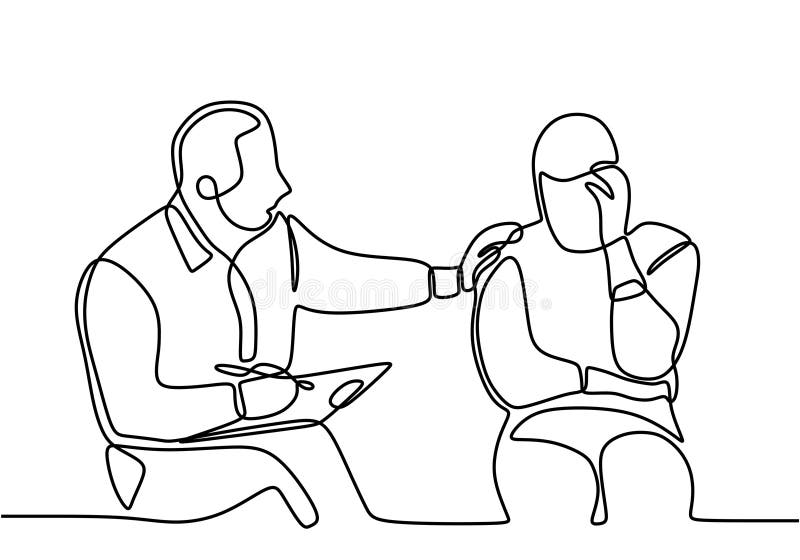Psych Therapy: A Comprehensive Guide to Techniques and Results

Cognitive-Behavioral Therapy
Cognitive-Behavioral Therapy (CBT) is an extensively used psychotherapeutic method that concentrates on identifying and changing inefficient reasoning and actions patterns. Established in the 1960s by Aaron T. Beck, CBT combines cognitive and behavior concepts to deal with numerous psychological wellness concerns, including depression, anxiousness, and stress-related conditions. The premise of CBT is that maladaptive ideas add to psychological distress and maladaptive habits. By reorganizing these thoughts, people can accomplish considerable renovations in their psychological well-being and day-to-day functioning.
Strategies such as cognitive restructuring, direct exposure therapy, and skill-building exercises are typically utilized. Cognitive restructuring entails difficult and changing negative thought patterns, while direct exposure therapy intends to lower concern and anxiety with steady direct exposure to been afraid circumstances or objects.
Evidence-based study sustains the effectiveness of CBT for a large range of psychological problems - Best Psychologist in Delhi. Its emphasis on ability procurement and self-help strategies equips clients to continue progress individually after therapy ends. The adaptability and performance of CBT have made it a cornerstone in modern psychotherapeutic method
Psychodynamic Methods
Rooted in the very early theories of Sigmund Freud, psychodynamic approaches concentrate on checking out the subconscious mind and its influence on behavior and feelings. These methods intend to discover covert ideas and feelings that may be driving maladaptive behaviors and emotional distress. Central to this method is the principle of inner problem, often coming from unresolved past experiences, particularly those from childhood years.
Therapists utilizing psychodynamic methods employ numerous key approaches, including cost-free association, where people are encouraged to talk openly to reveal subconscious product, and dream analysis, which interprets the hidden web content of desires. Additionally, the expedition of transference and countertransference dynamics within the healing relationship is crucial. These communications can give understandings into the individual's inner globe and relational patterns.
Psychodynamic treatment is usually longer-term contrasted to various other methods, offering a thorough and deep understanding of the individual's psyche. Research study suggests that it can be especially reliable for complicated psychological wellness issues, such as personality disorders and chronic depression. By fostering self-awareness and emotional understanding, psychodynamic treatment looks for to bring unconscious material to consciousness, making it possible for individuals to achieve purposeful and enduring modification in their lives.
Humanistic Methods
Structure on the foundations laid by psychodynamic strategies, humanistic techniques use a distinctive perspective focused on individual prospective and self-actualization. Coming from the mid-20th century, these strategies prioritize the inherent benefits and growth capacity of individuals, highlighting an alternative sight of human experience. Key figures such as Carl Rogers and Abraham Maslow have actually considerably influenced this restorative approach, which includes techniques like client-centered treatment and Gestalt treatment.
Client-centered treatment, created by Rogers, plays an essential role in humanistic strategies. It counts on the specialist offering an atmosphere of genuine favorable regard, compassion, and congruence. This fosters a safe area for clients to explore their feelings and experiences without judgment, facilitating self-discovery and individual growth. The specialist's function is more of a facilitator than an authority, motivating clients to harness their internal resources for recovery.
Gestalt therapy, another important humanistic strategy, highlights existing moment awareness and the assimilation of mind and body. By concentrating on the "present moment," clients get greater insight right into their current feelings and habits. Methods such as role-playing and led visualization are commonly employed to help customers gain a deeper understanding of themselves, eventually causing enhanced self-awareness and gratification.
Integrative Treatments
Integrative therapies represent a synthesis of numerous healing techniques tailored to fulfill the unique needs of each client. This method acknowledges the complexity of human psychology and the diverse nature of mental wellness concerns. By combining elements from different colleges of psychiatric therapy-- such as cognitive-behavioral treatment (CBT), psychodynamic treatment, and humanistic strategies-- integrative therapies supply a more versatile and all natural therapy standard.
Practitioners of integrative therapy assess each client's particular requirements, signs, and personal background to devise a tailored therapy strategy. This customized approach boosts the potential for healing success by dealing with the origin of mental distress and promoting general health. Strategies could include mindfulness workouts, cognitive restructuring, and psychological handling, each chosen to target different elements of the client's issues.
In addition, integrative therapies emphasize the healing connection, seeing the client-therapist bond as an important component of effective treatment. This relationship cultivates a helpful environment where clients feel secure to he has a good point check out and address their problems. The versatility of integrative therapies makes them appropriate for a broad array of problems, including stress and anxiety, anxiety, injury, and interpersonal troubles, thereby increasing their applicability and performance in diverse scientific settings.

Gauging Treatment Results
Evaluating the link performance of psychotherapy is important for both clinicians and customers to make sure that the therapy is producing the wanted outcomes. To achieve this, numerous methods and devices are used to determine therapy end results systematically. Standard analysis instruments, such as the Beck Clinical Depression Inventory (BDI) and the Generalized Stress And Anxiety Problem 7 (GAD-7), give quantitative information on symptom seriousness and adjustments over time.
In addition to standard tools, qualitative techniques like customer self-reports and clinical meetings use valuable insights into the individual experiences and perceived development of customers. Routinely arranged evaluations, commonly at the beginning, omphalos, and end of therapy, help in tracking the trajectory of improvement or determining locations needing adjustment.
Outcome measurement is not limited to signs and symptom reduction; it likewise incorporates practical improvements in life, such as much better social connections, increased work productivity, and enhanced total wellness. Modern advancements in electronic health have presented mobile applications and on-line systems that facilitate real-time monitoring and feedback, further fine-tuning the analysis procedure.
Eventually, a detailed strategy to measuring therapy end results ensures that therapeutic interventions are efficient, efficient, and tailored to meet the individual needs of customers, therefore enhancing the overall therapeutic experience.
Conclusion
Humanistic techniques focus on personal growth and self-actualization, while integrative therapies combine numerous techniques for customized therapy plans. Reviewing therapy end results with standardized analyses and qualitative techniques makes sure a comprehensive understanding of effectiveness, eventually leading clients toward withstanding mental wellness renovations.
From Go Here the structured method of Cognitive-Behavioral Therapy (CBT) to the deep exploration of the unconscious in psychodynamic treatment, each technique brings one-of-a-kind advantages. Its focus on skill acquisition and self-help techniques empowers clients to proceed development individually after treatment ends (Best Psychologist in Delhi). Trick numbers such as Carl Rogers and Abraham Maslow have actually dramatically affected this therapeutic strategy, which incorporates techniques like client-centered treatment and Gestalt therapy
